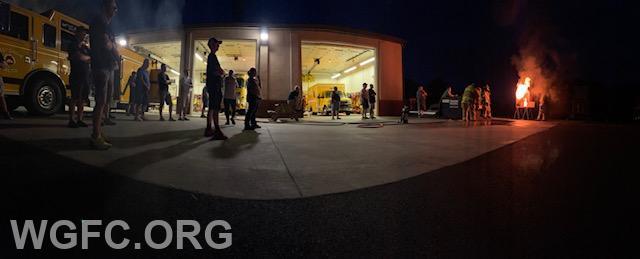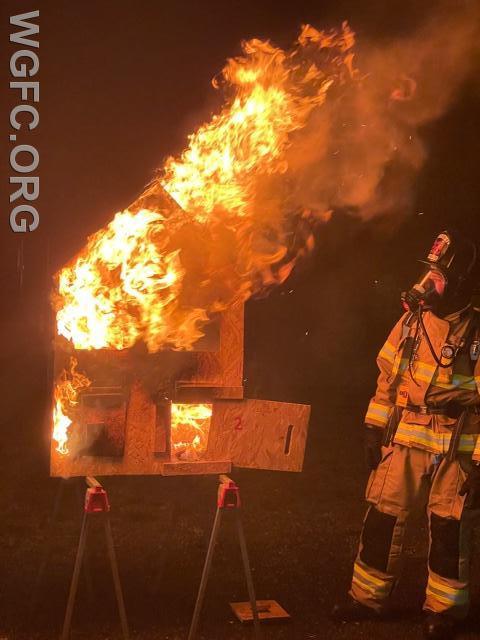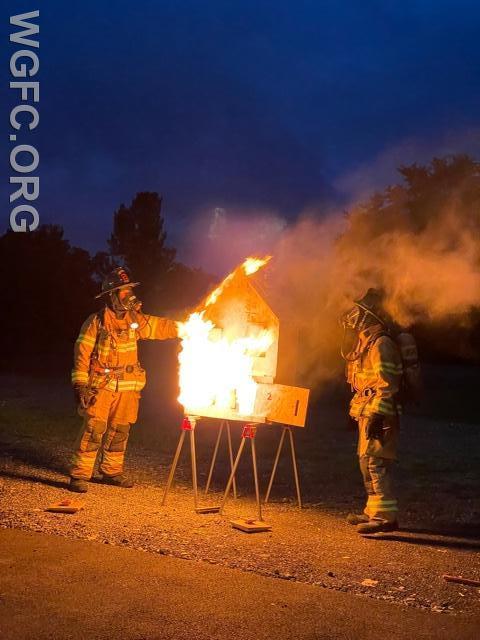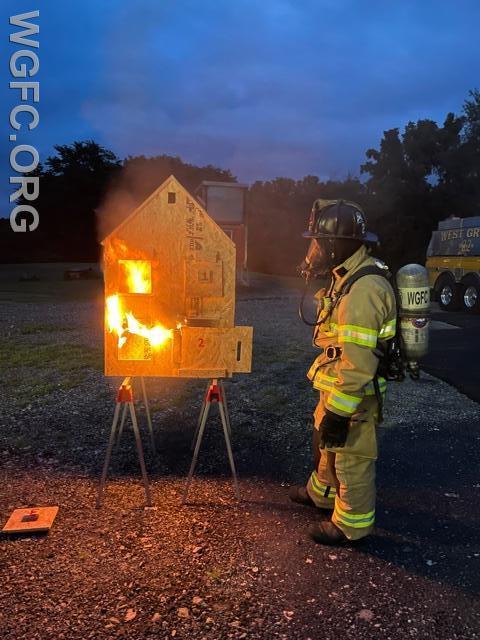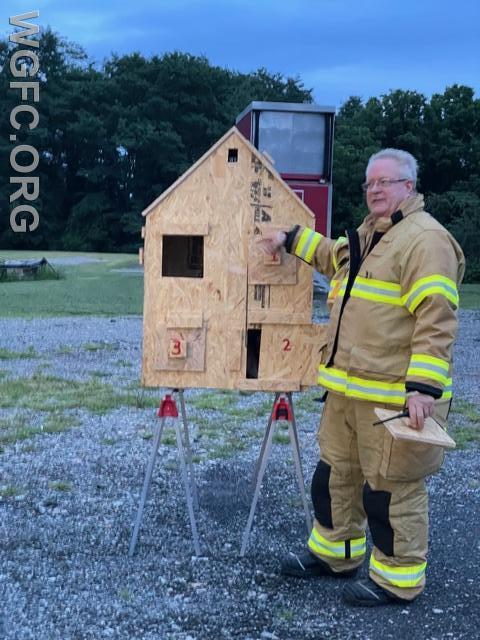| August 17, 2021 | |
| The science of fighting fire has changed a lot since the early days of bucket brigades and horse-drawn pumpers. But even over the past ten years, the methods used to fight fire continue to evolve -- and that has been the subject of training at the West Grove Fire Company this month. Scientific research, field experience and the continuing changes in building construction methods and materials have led to the need for firefighters to modify and adjust firefighting strategy and tactics. For example, older homes in West Grove Borough were constructed with heavy timber rafters and floor joists which last longer in fires. Newer, larger homes out in the housing developments of Landenberg are built with lightweight, so-called engineered beams which fail very quickly in fire conditions - posing significant risks of collapse and danger for victims and firefighters alike. And research about how fire moves through a structure, based on the availability of air through open windows and doors, has changed the approach firefighters take to perform ventilation (the process of clearing heat and smoke from burning buildings). Understanding the dangers of building materials, construction techniques and changing fire conditions requires constant training so firefighters can more quickly extinguish fires, rescue victims, and avoid becoming victims of collapse. Typically these strategy classes have been taught to fire officers, whose job is to direct firefighting at emergencies. At West Grove, our operational leaders are teaching these same approaches to front line firefighters. This helps the entire team to get grounded in the skills of fire flow, ventilation and strategy -- that keeps the team aligned from top to bottom, and everyone involved on the same page and safe. This month's training is designed to share wisdom in the classroom and then demonstrate classroom topics in practical settings. Classes in August were led by WGFC Safety Officer Bob Hannan, who also teaches at the county level. Bob constructed a small-scale house-like structure, which was then used with burning materials to demonstrate how small changes in ventilation (an opened window, a closed door, a vented roof, etc.) changed the way fire advanced through a structure, and how a simple change -- like closing the front door might impact fire growth inside the structure. Ten years ago or more, firefighters typically opened a lot of windows to ventilate, and often attacked fires aggressively with inside attacks. Research and practical experience has demonstrated more measured approaches -- even something as simple as a hoseline discharged into a burning room from outside as an initial step is now known to cool a burning structure enough to give victims a chance through reduced heat. Additionally, firefighters now understand the risk from today's house construction techniques, and are much more cautious about entering a newer home due to risk of floor collapse. Every fire is different, so WGFC firefighters and their officers train continuously, learning the skills and knowledge to protect their own safety while understanding better how to rescue victims and protect lives and property. |
|
| Units: | L |
